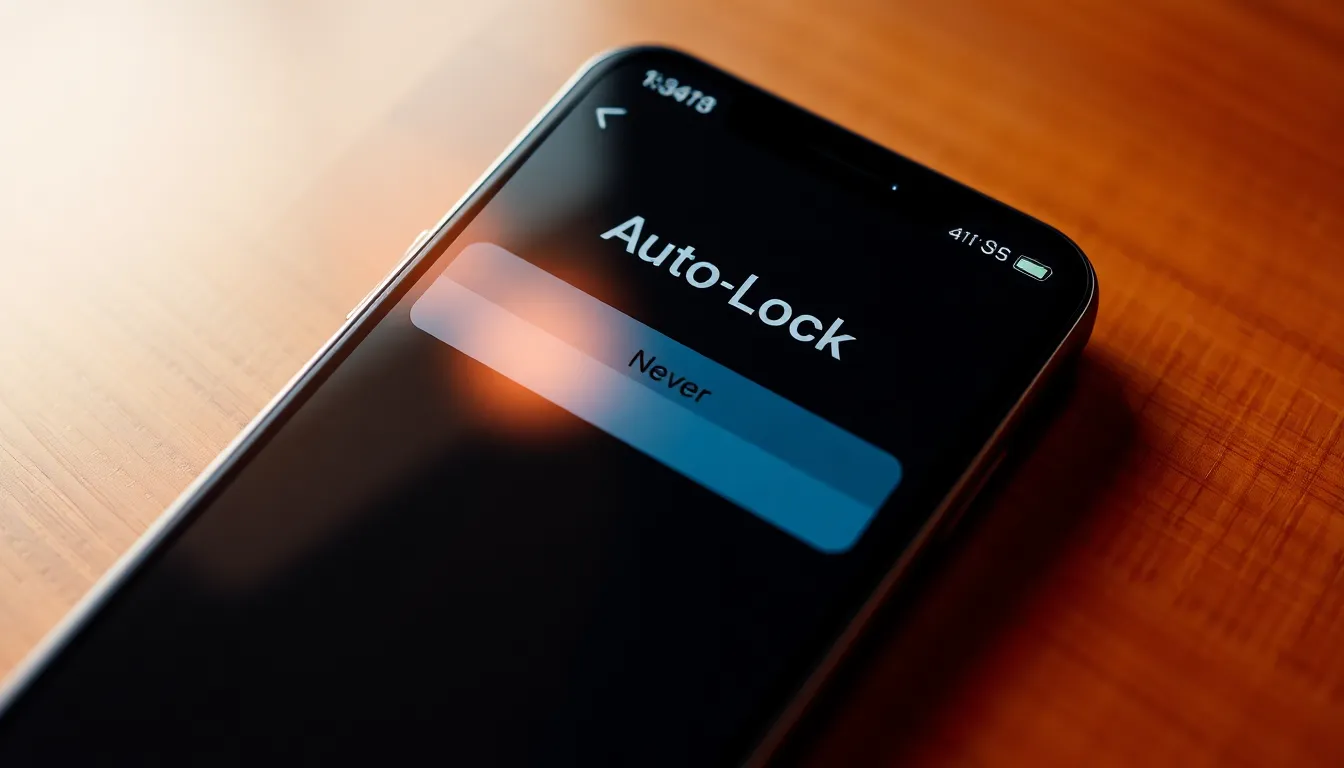Table of Contents
ToggleIn a world where every second counts, the last thing anyone needs is their iPhone screen going to sleep just when they’re about to read that hilarious meme or catch an important notification. It’s like your phone is playing hard to get, and let’s be honest—no one has time for that! If your device is constantly dimming and locking itself at the worst moments, it’s time to take control.
Understanding Screen Sleep on iPhone
Screen sleep on the iPhone occurs when the display dims and locks automatically. Controlling this feature helps users maintain productivity and convenience during device usage.
Importance of Screen Sleep Settings
Screen sleep settings determine how long the iPhone screen remains active without interaction. Adjusting these settings improves user experience by minimizing interruptions. A longer duration can aid in tasks like reading, gaming, or watching videos. Properly configured settings help conserve battery life while balancing accessibility. Users benefit from maintaining visibility of important notifications and ongoing activities.
Common Issues with Screen Sleep
Inconsistent screen sleep behavior often frustrates iPhone users. Many experience unintentional screen locks during phone calls or while reading content. Sudden screen dimming can disrupt critical tasks and interaction. Some users find it challenging to remain engaged without frequent screen reactivation. Others report a lack of responsiveness when adjusting settings, leading to further dissatisfaction.
How to Turn Off Screen Sleep iPhone

Changing the screen sleep settings on an iPhone can enhance the user experience significantly. Attention to these settings can prevent the frustration of automatic screen dimming and locking.
Step-by-Step Guide
- Open the Settings app on the iPhone.
- Scroll down and tap Display & Brightness.
- Look for the Auto-Lock option.
- Select Never to prevent the screen from sleeping automatically.
Executing these steps ensures the screen remains on, especially during activities where continuous visibility matters. Users can easily revert settings if needed by following similar steps.
Alternative Methods to Adjust Sleep Settings
Adjusting screen sleep through accessibility settings also provides convenience. Start by opening the Settings app. Then, go to Accessibility, followed by Touch.
From there, tap Auto-Lock. Users can apply the same Never option for continuous display. This alternative method allows for further customization of device behavior and suits preferences for both daily tasks and media consumption.
Tips for Managing Screen Time
Managing screen sleep settings contributes to a smoother user experience on an iPhone. Adjustments can enhance productivity and reduce frustration.
Practical Tips for Reducing Screen Sleep
Set the Auto-Lock feature to “Never” for uninterrupted reading or gaming sessions. Increase the duration before the screen sleeps by selecting a longer time frame in the Auto-Lock settings. Utilize guided access for specific applications, keeping the screen active during crucial tasks. Opt to disable Low Power Mode, which often accelerates screen dimming. Experiment with screen brightness; brighter screens may remain active longer without dimming.
Benefits of Adjusting Screen Sleep Settings
Adjusting screen sleep settings boosts productivity. A longer screen-on duration permits more engagement during tasks such as watching videos or browsing. Setting the Auto-Lock to “Never” helps during prolonged usage like presentations or tutorials. Reduced interruptions increase focus, allowing for better concentration on important activities. Users benefit from tailoring settings to their unique habits, ultimately enhancing their overall device experience.
Troubleshooting Screen Sleep Issues
Screen sleep problems can be frustrating, especially when settings seem unresponsive. Users encountering these issues can explore various solutions for adjustments.
What to Do If Settings Don’t Change
When screen sleep settings fail to update, users should first restart their iPhones. A simple reboot often resolves glitches that prevent changes from taking effect. Checking for software updates also helps, as updates can fix bugs related to display settings. If problems persist, resetting network settings might aid in restoring default functionalities. Resetting network settings can be done via Settings, then General, followed by Reset. Completing this action doesn’t erase personal data but requires re-entering saved Wi-Fi passwords. This series of steps can often restore expected behavior.
Resetting Settings to Factory Defaults
Resetting all settings can help when screen sleep issues prevail. This option returns the device settings to factory defaults without erasing personal data, ensuring apps and information remain intact. Users can access this under Settings, then General, and select Reset. After confirming the action, it takes a few moments for the changes to apply. Post-reset, screen sleep settings become available for reconfiguration, offering an opportunity for fresh adjustments. It’s wise to note that specific preferences, such as Wi-Fi connections and wallpaper settings, might require reconfiguration after this process.
Adjusting screen sleep settings on an iPhone can significantly enhance user experience. By taking control of how long the screen stays active users can minimize interruptions and maintain focus during important tasks. Whether it’s reading a long article or enjoying a video a few simple adjustments can make all the difference.
For those who encounter persistent issues with screen sleep behavior troubleshooting steps are readily available. Restarting the device or checking for updates can often resolve these frustrations. Ultimately customizing screen sleep settings to fit individual needs leads to a more enjoyable and productive interaction with the iPhone.




